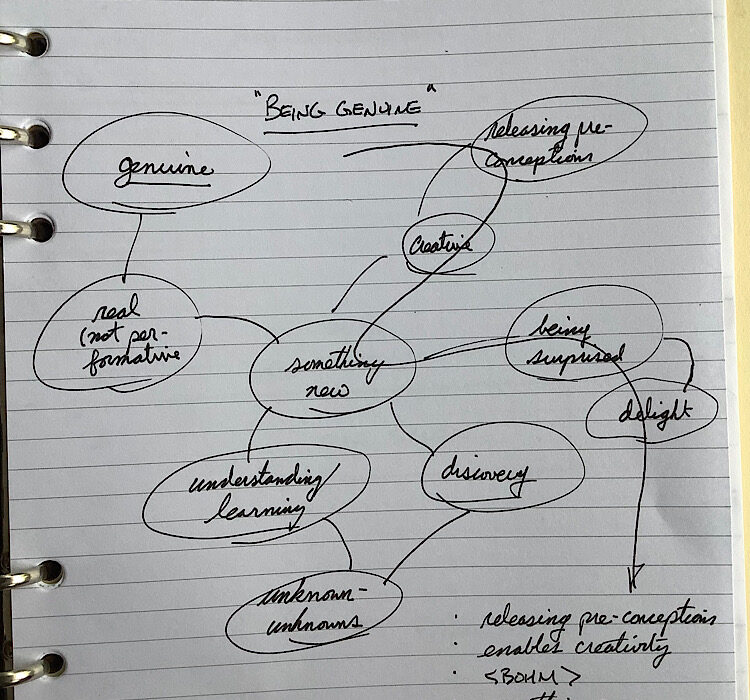First a hat tip to Austin Kleon. His most-recent post, Do you have a nemesis? included a mind map, which is the most-recent of the countless times I’ve encountered mind mapping. I’m a fan of Kleon for many reasons, not least of which is that he, like me, flouts the usual guidelines for the capitalization of one’s titles.
I’ve tried mind mapping a few times. (What’s that? Did I overdo it with software and processes? …yes, of course!) Today, I was feeling unmotivated to write for Open + Curious. I thought, “Just start. JUST START!” But I simply didn’t want to face the blank screen of the digital document.
Instead, I opened my idea garden wherein I capture interesting nuggets to be seeds for future writing. In my garden, I rarely (I first wrote “never,” but I don’t want to jinx myself) have trouble finding a nugget to write about. I grabbed my favorite pen, and flipped to a blank sheet in the little binder I keep. So much action! I felt like I was already writing. /s
On that mind map I wrote the “something new” at the center. It’s not a meaningless bit of meta; it’s the central idea from a captured nugget. At this point, staring at the paper with my pen in hand felt great, versus facing a digital document which always feels too structured for me to think in. (ref. Sönke Ahrens.) In just a few minutes of thinking and scribbling I had all those bubbles. Then I had a title. …then a route. …an outline. And from there the writing felt doable.
ɕ
